Artwork Guidelines
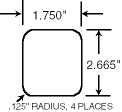
Be Dimensionally Accurate
If a blueprint exists or will exist, make sure the art is created to the exact dimensions shown on the print. If no blueprint will apply, then be sure to dimension all the physical aspects of the label. This includes the overall dimensions, radius corners, and exact locations and dimensions of interior cutouts. In addition, any printed features (like LED's) that align to the housing must be dimensioned, just as if they were an interior cutout.
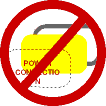
Do Not Color Separate
Artwork should be prepared without traps or color separations. Steven Label will separate colors and add traps after determining the printing method and the order in which colors are to be printed.
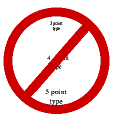
Avoid Fine Copy and Thin Lines
Fonts that are 6 point or larger generally reproduce without difficulty. Below 6 points, printing quality will vary depending on the font style and weight. For instance, 5 point Helvetica regular will not print as well as 5 point Helvetica medium. For practical purposes, the absolute minimum is 4 point bold for positive copy and 6 point bold for reversed copy. Register marks, Trademarks and Copyright marks (®, ™, ©) below 6 point must be bold. Line weights should always be .010" or greater.
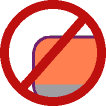
Avoid Bleed Borders
Bleed borders should be at least .06" (1/16") wide. Borders that are thinner will look "lopsided" if the relation of the printing to the die-cutting varies even slightly. Consider using an in-line border (a thin line around the inside perimeter of the label that does not touch the edge of the label), rather than a bleed border. The in-line border should be at least .05" from the edge of label.
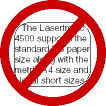
Stay Away from the Edge
Copy, logos, and graphic elements should be a minimum of .05" from the edge of the label, if possible. This allows for some variation in the cutting process without affecting the appearance of the label.

Provide a Printout
Whenever possible, supply a printed copy of your digital artwork, preferably in color. Often differences in font libraries, program versions and output devices cause subtle changes to the art. A "hard copy reference" is the best way to assure the we print exactly what you intend. If you are unable to supply a printout, we will create a color proof for your signature, to make sure no errors occur.

Supply Filename, Program & Version
Specify the filename, and the software program and version in which the art was created. Steven Label is able to accept Macintosh and PC files from all major graphic design and desktop publishing programs, including Adobe Illustrator, Freehand, QuarkXpress, PageMaker, CorelDraw and AutoCad. See our most recent Program Update for a complete list and the versions currently supported.

Specify Fonts
If possible, please provide a list of the fonts that are referenced in your art file. Steven Label maintains an ever-growing library of hundreds of fonts. If you are referencing a font not currently on hand, we will need to buy the font, have it supplied by you, or arrange for you to convert this portion of your art to "Paths" or Outlines".

Include Graphic Files
Be sure to include all the graphic files that are referenced by your artwork. The original EPS files are preferred, but placeable EPS images, .TIFF, .PCX, and .BMP are also acceptable. Be sure that all scanned images have been "cleaned" and will print sharp and solid. We prefer "linked" graphics rather than "embedded" ones for better color control and printability of the image.

Sending Files Electronically
If you have access to the internet, you can either download your file onto our FTP site (we prefer this) or e-mail it to us (if it is under 1MB). Before sending files to us, please keep the file name to 8 characters (ex. "L123456a.eps"). For large files, it is recommended to compress the file. If file compression is necessary, on the Mac "archive" the file or use Stuffit Deluxe; on the PC use PKZip. Contact ourcustomer service department for your password and details on how to send your art.

Supply "Original" Art
Please supply original artboards or first generation positive film. Do not supply "stats" of artboards. Even first generation copies of artboards lose resolution compared to the original. Artboards will be returned after Steven Label completes the filmwork from which plates and screens are made.
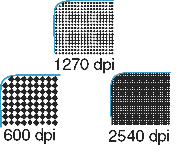
Output Film at 1270 or 2540dpi
Output should be phototypeset at 1270 or 2540 dots per inch. Toner based imaging systems, while claiming 1200 dot resolution, suffer from toner splatter and can distort image dimensions as much as .02". If laser output must be used, supply 4 times size. Artwork for small labels should be produced 2 or 4 times larger than actual size, so that the artwork image is at least 1.5" x 1.5" in size. Labels over 1.5" x 1.5" should be actual size. One-up artwork is preferred over multiple images.

Use Cropmarks, Not Keylines
Do not include keylines on final art. Keylines that do not intersect the art can be removed, but keylines that intersect bleeding copy cannot be removed and render the art unusable. Instead, specify the edge of the art using crop marks outside of the image area.